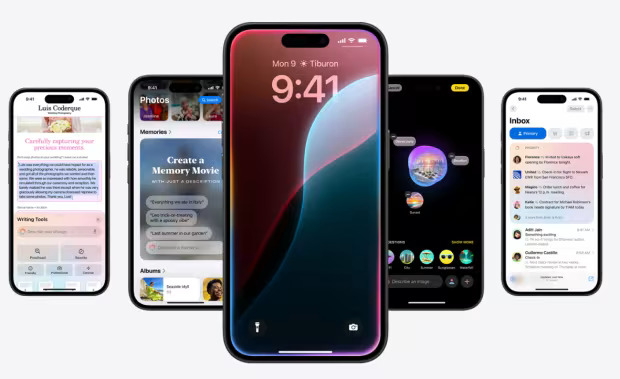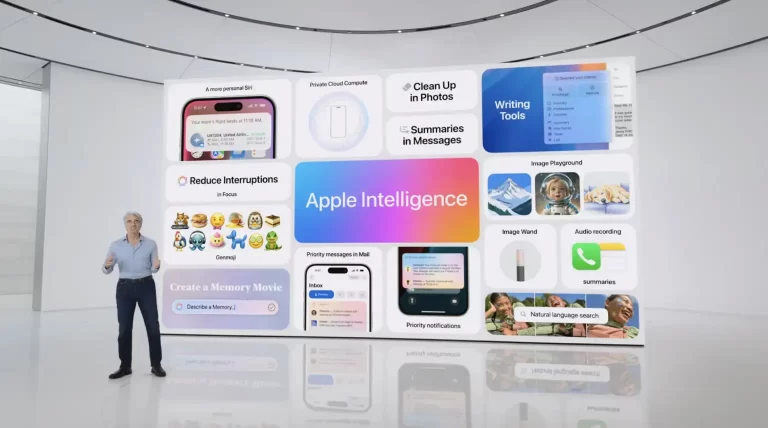In the rapidly evolving landscape of smartphone technology, artificial intelligence has emerged as the new battleground for major manufacturers. Apple, traditionally cautious about jumping on technology bandwagons, made a significant leap forward with the introduction of Apple Intelligence on the iPhone 16 lineup. Now, several months into 2025, we can properly assess how these AI features have transformed the user experience and whether they live up to the considerable hype that surrounded their launch.
The Evolution of Apple Intelligence
Apple Intelligence was first announced at WWDC 2024, promising a suite of AI-powered features designed to help users “write, express themselves, and get things done effortlessly.” However, the rollout was notably staggered, with the initial features only becoming available with iOS 18.1 in October 2024, weeks after the iPhone 16 series hit the market.
This phased approach continued through early 2025, with significant feature additions in iOS 18.2, 18.3, and most recently, 18.4. This gradual deployment strategy has been both a blessing and a curse—allowing Apple to refine features before release but also creating frustration among early iPhone 16 adopters who purchased devices partly based on promised AI capabilities that weren’t immediately available.
Core Apple Intelligence Features in 2025
Notification Summaries: Taming the Digital Chaos
Perhaps the most universally appreciated Apple Intelligence feature is Notification Summaries. In a world of constant digital bombardment, this feature intelligently condenses multiple notifications from the same app or conversation into concise, readable summaries.
According to Engadget’s long-term review, “It’s a good attempt at taming the wild west of countless group chats across multiple messaging apps, calendar reminders, Substack pings and everything else.” The feature works across various messaging platforms without requiring individual app updates, making it immediately useful upon installation.
However, the feature hasn’t been without controversy. The BBC raised concerns about summaries that misrepresented headline content, prompting Apple to make the AI-generated nature of these summaries more transparent beyond the small Apple Intelligence icon. Users have reported occasional misinterpretations of conversation topics, but the general consensus is that the benefits far outweigh these occasional inaccuracies.
Writing Tools: Mixed Reception
Apple Intelligence’s writing tools—including proofreading, rewriting, and tone adjustment—have received a more mixed reception. While they function adequately for basic email responses and short messages, many users find them less helpful for more complex writing tasks.
As one reviewer noted, “These writing tools are not all that useful. I haven’t used them much beyond quick email responses to work requests and events.” This sentiment is echoed across user forums, where the writing features are often described as “basic” compared to dedicated writing assistants or even Google’s AI writing tools.
Voice Memo Transcription and Summarization
The ability to transcribe and summarize voice recordings has proven more valuable, particularly for professionals who frequently record meetings or interviews. When recordings are clear and relatively short, the transcription accuracy is impressive, and the ability to convert these transcripts into summaries, key points, lists, or tables adds genuine utility.
However, users have reported inconsistent performance with longer or more complex recordings. In some cases, the iPhone simply declines to summarize a transcript, displaying a notification that the tools “aren’t designed to work with this type of content” without further explanation.

Visual Intelligence: Google Lens Competitor
Visual Intelligence, accessible via a long press of the Camera Control button on iPhone 16 Pro models, represents Apple’s answer to Google Lens. The feature can identify text, landmarks, and even restaurant exteriors, providing information about opening hours and cuisine types through integration with ChatGPT.
While effective for clear, well-defined subjects like famous landmarks or printed text, Visual Intelligence struggles with busy scenes and lacks the ability to tap on specific objects within the frame for clarification. Nevertheless, practical functions like creating calendar events from posters demonstrate real-world utility when the feature works as intended.
Image Editing and Generation
Apple’s Clean Up feature allows users to remove unwanted elements from photos, similar to Google’s Magic Eraser. However, most reviewers agree that Apple’s implementation lags behind competitors in terms of natural-looking results.
Image Playground, Apple’s AI image generation tool, created initial excitement but has seen declining usage over time. As one reviewer put it, “After a bit of testing, however, I haven’t used it in the months since it launched.” The feature appears to have found more purpose as a supplementary tool within other apps, such as creating illustrations for the Invites app, rather than as a standalone creative platform.
Genmoji, on the other hand, has proven more enduring. This feature allows users to create custom emoji reactions with specific people, objects, and backgrounds. Its simplicity and immediate utility in messaging have made it one of the more consistently used Apple Intelligence features.
Privacy-Focused Approach
A distinguishing aspect of Apple Intelligence is its emphasis on privacy. Most features are processed on-device or through Apple’s Private Cloud Compute, which uses larger server-based models without permanently storing user data.
Even with the ChatGPT integration, Apple has implemented privacy safeguards. If users don’t sign in with an OpenAI account, only their specific requests and attachments are sent to ChatGPT, without sharing Apple Account details or IP addresses. Additionally, Apple’s agreement with OpenAI prevents the latter from using these requests to improve or train its models.
This privacy-centric approach represents a significant differentiator from competitors but comes with trade-offs in terms of feature capabilities and processing speed.
User Experience: The Reality vs. The Promise
Performance and Integration
Apple Intelligence features are available across the entire iPhone 16 lineup, as well as on the iPhone 15 Pro and Pro Max models. This democratization of AI features across price points (at least within the current generation) is commendable, especially compared to some Android manufacturers who restrict top AI features to their most premium devices.
However, the experience isn’t entirely seamless. Users report occasional delays when using AI-intensive features, and some functions feel disconnected from the core iOS experience rather than deeply integrated. As one forum user noted, “It sometimes feels like these features were added on top of iOS rather than built into its foundation.”
Competitive Landscape
When compared to AI implementations from competitors like Samsung and Google, Apple Intelligence presents a mixed picture. In direct comparisons of photo editing capabilities, for instance, Samsung’s Galaxy AI consistently outperforms Apple Intelligence, producing more natural and convincing results.
Mark Ellis Reviews noted in a comparison between the iPhone 16 Pro Max and Samsung Galaxy S25 Ultra that “Photo editing [is] far better with Galaxy AI than with Apple Intelligence,” highlighting the still-developing nature of Apple’s AI features compared to more mature implementations.
User Adoption and Satisfaction
User adoption of Apple Intelligence features varies significantly. While Notification Summaries and Genmoji have seen consistent usage, other features like Image Playground and some writing tools have experienced declining engagement after initial experimentation.
User satisfaction similarly varies by feature. A common sentiment expressed in forums is that Apple Intelligence feels like “a work in progress” rather than a fully realized product. As one Reddit user put it, “Apple made the mistake of releasing and advertising the iPhone 16 as the AI phone BEFORE it released with features that did not come out.”
Beyond Apple Intelligence: The Camera Control Button

While not strictly an AI feature, the new Camera Control button on the iPhone 16 series deserves mention as it works in conjunction with several Apple Intelligence features. This multifunction button offers a haptic half-press and the ability to swipe across to adjust camera settings.
Engadget’s review describes it as “Apple’s most intriguing interface change since the short-lived 3D Touch,” noting that it “instantly works as a basic camera app launcher” but “goes beyond being a launcher” with its additional functionality. The button also provides access to Visual Intelligence through a long press, creating a physical entry point to Apple’s AI capabilities.
The Future of Apple Intelligence
As we move through 2025, Apple continues to refine and expand Apple Intelligence. Recent updates have improved performance and accuracy across various features, and the company has promised additional capabilities in upcoming iOS releases.
The integration with third-party services like ChatGPT suggests Apple is open to partnerships that enhance its AI offerings while maintaining its privacy standards. This hybrid approach—combining on-device processing with carefully managed cloud services—may define Apple’s AI strategy moving forward.
Conclusion: Transformative or Incremental?
Has Apple Intelligence transformed the iPhone user experience in 2025? The answer is nuanced. While certain features like Notification Summaries offer genuine improvements to daily usability, others feel more like incremental enhancements rather than revolutionary changes.
Apple’s cautious, privacy-focused approach to AI means that some features lack the immediate wow factor of competitors’ offerings. However, this same approach may ultimately prove more sustainable and trustworthy in the long run.
For current iPhone users considering an upgrade specifically for Apple Intelligence, the value proposition depends largely on which features align with their personal usage patterns. For those already in the market for a new iPhone, the AI features represent a welcome addition to an already capable device, even if they don’t yet fully deliver on Apple’s ambitious vision.
As one reviewer aptly summarized: “There are a lot of smart touches, but so far, it isn’t remarkable.” This perhaps best captures the current state of Apple Intelligence in 2025—promising, occasionally impressive, but still evolving toward its full potential.

